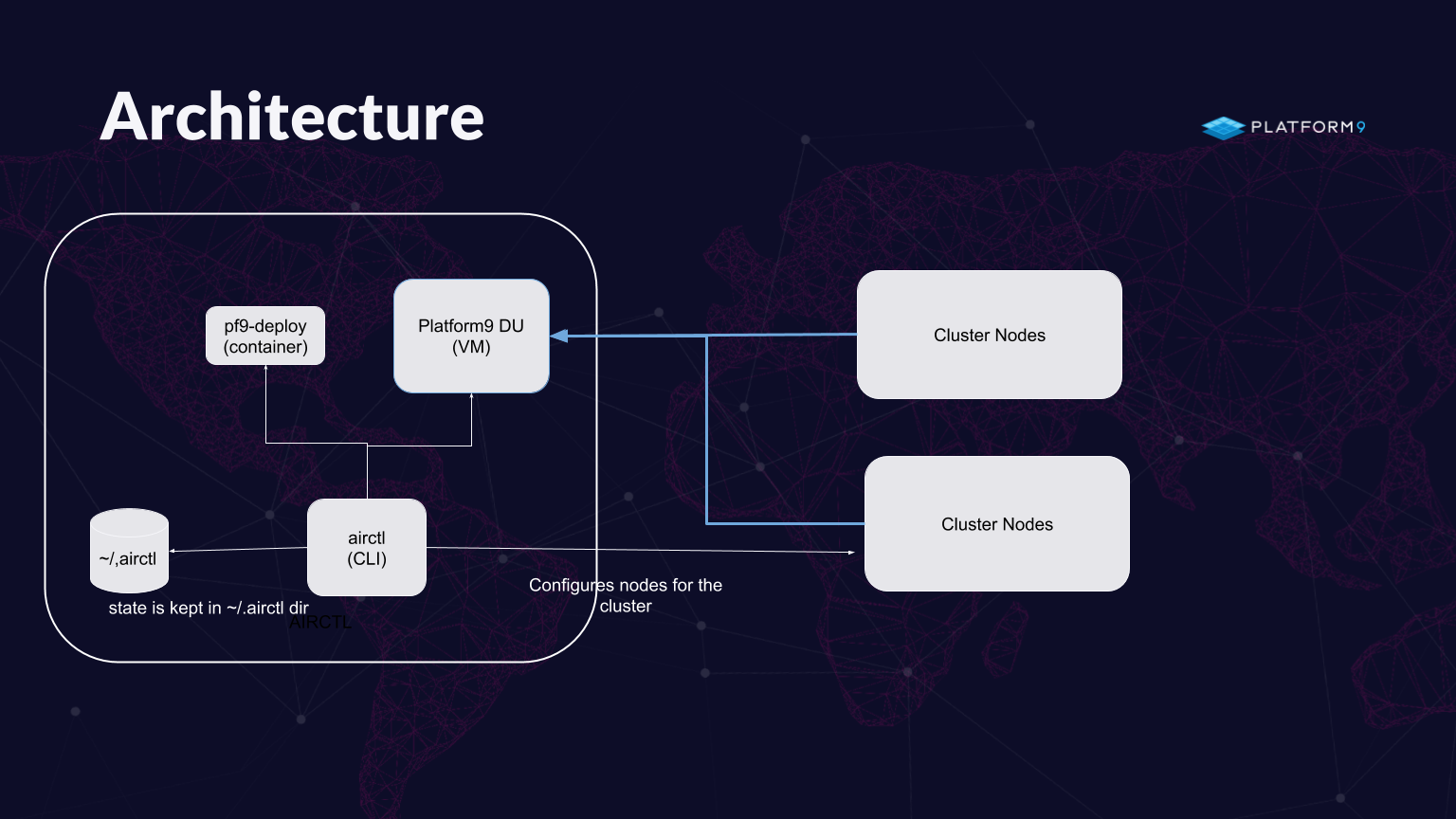Pre-installation Information
Introduction
This article provides information on the Platform9 Edge Stack (PES) and an overview on how to install it in an On-Prem setting.
Terminology
DU
A Deployment Unit (DU) is a unit of deployment that typically represents a region for a given customer. You may also refer to this as the Platform9 Management Plane. The current version of DU runs as a virtual machine on a deployment host, future version of the product would include a containerized version of the same product making it easy to deploy on Virtual machines in public or private clouds.
One of the important architectural goal behind this design is to allow for running clusters even when the management plane is not running. The current design allows for it, the details can be found in the Architecture overview section.
Management Station or Deployment Host (DH)
One of the key prerequisite is a place to install different utilities and the DU. A management station or deployment host assumes that responsibility. The deployment host is a machine where DU can run and also has the necessary connectivity from which users can access all the Kubernetes nodes. This host can be a small workstation like Intel (Next Unit of Computing) NUC, or even share the space with one or more Kubernetes Nodes in the diagram. <Roopak to find a better diagram>

Host Prerequisites
Machine Prerequisite
As mentioned, the 'Deployment Host' (where Platform9 Management Plane or DU) would be installed needs to create a Virtual Machine. This deployment host (ONLY the deployment host) needs to support "KVM" device and hence needs to be a bare-metal server, or it needs to be a virtual machine which has nested KVM support.
OS Prerequisites
Centos/Redhat 7.5 / 7.6 / 7.7 / 7.8
Software
As mentioned earlier, the current version of Platform9 uses a Virtual Machine to host the DU/Management Plane, for that machine specifically we would need the few items
Proxy
Note: If using a proxy in your environment, edit the /etc/yum/yum.conf file to add the proxy configuration as well as environment variable HTTP_PROXY and HTTPS_PROXY
Install libvirt, start libvirt and verify using the commands below.
# Install Libvirtyum -y install libvirt qemu-kvm# Ensure Libvirt is runningsystemctl start libvirtd# make sure libvirt is working wellvirsh list --all# Add your user to the authentication of the libvirt.sudo usermod --append --groups libvirt $USER# Also give the qemu user access to your home directory where the state is keptchmod a+x /home/$USERPasswordless Sudo
Many operations require sudo access (for example, the installation of yum repos, docker etc.) Please ensure your hosts have passwordless sudo enabled.
SSH Keys
For the DU running inside the Virtual Machine, Platform9 tooling injects an SSH key at the first boot. Please generate those keys. The same key can be used for communicating with different hosts as well.
Make sure the created SSH key is also added to different hosts as authorized_keys. Copy over the ssh public key into the other hosts and add to ~/.ssh/authorized_keys
Download Artifacts
Platform9 publishes PES artifacts as secured HTTP endpoints. These endpoints can be accessed via curlorwget or any other command line utility to download the artifacts.
To downloading these artifacts, contact a Platform9 Support, Solutions Architect or Sales Team member. They will provide you with the "secret" that can be added to the "_user-agent_" value and the appropriate release version,
The script used to download artifacts is noted below. Simply run download.sh and then execute it with the provided secret and the appropriate version number.
wget https://raw.githubusercontent.com/platform9/support-locker/master/edge-stack/download.shchmod +x ./download.sh#./download.sh <secret> <version># in the following example super-secret-word is the secret provided by Platform9 team# v-5.3.0-15312 is the version to download and install./download.sh super-secret-word v-5.3.0-15312Once downloaded, the directory contains a list of .tar or .tar.gz files, an index file, and a simple install.sh file. Visit the Artifacts page to learn more about the downloaded artifacts.